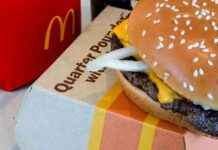Pittsburgh International Auto Show
To learn more, go to www.pittautoshow.com/index.cfm.
Sign up for one of our email newsletters.
Updated 16 minutes ago
The notion that millennials are less likely to buy cars has hit a speed bump.
With gas prices holding steady and millennials having children, car manufacturers are betting that SUVs once again will be popular once again.
According to Edmunds.com, new car sales hit a record 17.5 million in 2016, with SUVs, pickups and vans making up 60 percent of the total — also a record. Edmunds reported that in December alone, more than 1 million SUVs, pickups and vans were sold.
Some of these vehicles will be on display beginning Friday when the Pittsburgh International Auto Show gets underway at the David L. Lawrence Convention Center in Downtown. The show runs through Monday.
John Putzier of the Greater Pittsburgh Automobile Dealers Association, which sponsors the event, said the popularity of SUVs isn't all that surprising; it's one Americans typically see every few years as gas prices fluctuate. But it's not always easy for dealers to pivot from selling one type of vehicle to another.
“Our dealers will sell anything,” he said. “But the dealers are not in the driver's seat when it comes to what manufacturers are building. When that pendulum swings, it's hard for manufacturers to keep up, and it's expensive for dealers to retool their inventory to go from a showroom full of pickup trucks to small cars and back again.”
Last year, according to market research firm JD Power, millennials bought 4 million cars and trucks, representing 28 percent of the new car market. That's second only to baby-boomers.
Contrary to the Pittsburgh region's history of lagging a bit on national trends, SUV and pickup truck sales locally have been robust during the past few years, Putzier said.
“We saw a big boom in pickup trucks around the Marcellus shale activity, and we're seeing the same thing around the Shell cracker plant (in Beaver County),” he said.
If not for those driving factors, Putzier said, it's likely sales of larger vehicles in the region would have plateaued.
“If you look at the East Coast as a whole, it's not a big pickup truck and SUV market,” he said.
The 2018 Ford Expedition, the carmaker's biggest vehicle, has been overhauled, said product marketing manager Ryan Gillenwater. The frame is lighter aluminum, and there are a host of tech features designed to lure plugged-in buyers.
There's an available Wi-Fi hotspot that has a 50-foot range, six USB ports, four 12-volt power sources and Apple Car Play, Sync Connect and Android Auto capabilities. So much tech can allow everyone to use their own electronic devices on long trips — and possibly avoid conversation entirely.
There are also new safety and maneuvering features, such as a 360-degree camera and trailer backup assist.
Although the average mileage per gallon across the SUV market has improved, there's still a gap between SUVs and cars. According to Edmunds, the 2017 Expedition averages 18 miles per gallon, compared to the 27 miles per gallon that 2016's top-selling Toyota Camry gets (to say nothing of the 52 miles per gallon that 2017 Toyota Prius drivers enjoy).
While millennials might not yet be in the market for a vehicle the size of an Expedition (with a sticker price topping $48,000), smaller SUVs such as the Ford Eco Sport or Hyundai Tucson are designed to ease them into the SUV mindset.
“We all know that life changes and people's family sizes change at various stages in their life,” said Eco Sport brand manager Karen Sullivan. “We want to provide vehicles that fit them at that moment in time, even if the price of gas may change.”
Besides Ford, manufacturers with SUVs or pickups being featured at the convention center include Lexus (LX), Land Rover (Discovery), Jeep (Compass), Hyundai (Tucson) and Chevrolet (Equinox and Silverado).
Putzier said a problem for manufacturers selling SUVs will be adhering to the federal Corporate Average Fuel Economy standards, which require automakers to make new vehicles more fuel efficient. The current target set by the National Highway Traffic Safety Administrationis for vehicles to achieve 54.5 miles per gallon by the 2025 model year.
“If everyone wants the gas hogs, that's going to make it harder to meet the standards,” Putzier said.
If demand for SUVs remains strong, manufacturers will continue to build them. Whether the vehicles actually sell is another matter, Putzier said.
“It boils down to the price of gas and the economy,” he said. “People are holding on to their cars longer than they used to because they're built so well.”
Our editors found this article on this site using Google and regenerated it for our readers.







